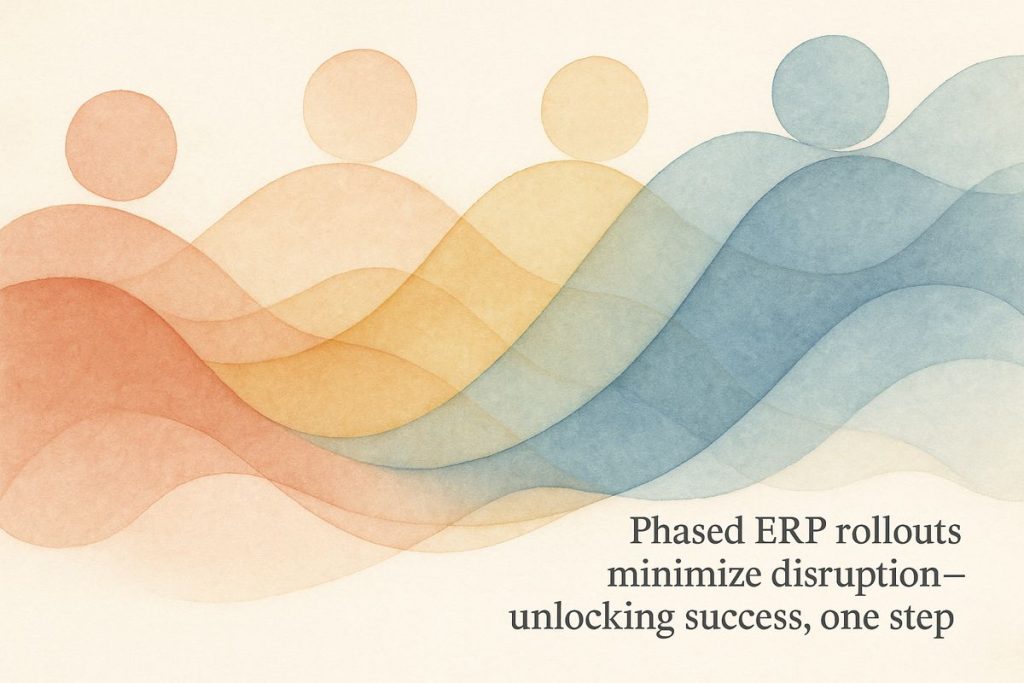McCormick is slowly upgrading its software systems, like adding new spices to a stew one by one, to avoid chaos and keep everything running smoothly. By changing things bit by bit, the company can fix problems as they pop up and learn along the way. This careful plan helps McCormick save money and stay flexible, instead of risking a big disaster with one huge change. At the same time, they’re bringing in new digital ideas and using AI, hoping to make their work even smarter and tastier.
Why is McCormick choosing a phased approach for its ERP upgrade?
McCormick is adopting a phased ERP upgrade to minimize risk, ensure continuous business operations, and enable iterative learning. This gradual rollout allows for user feedback, better cash flow management, and addresses issues in stages, avoiding the chaos of an all-at-once system switch.
Sowing the Seeds of Change
Consider this: the aroma of freshly ground pepper drifting through a Baltimore morning, just as McCormick’s IT team begins its daily standup. For over a century, McCormick has been the quiet conductor in the orchestra of global flavor, sprinkling the world with a little more taste, a little more possibility. Now, they’re orchestrating something else—a phased upgrade to their entire ERP (Enterprise Resource Planning) system. No big bang, no doomsday cutover. Instead, the transformation will unfold in careful, almost choreographed movements, like a string quartet tuning up before the overture. SAP—the grand old maestro of enterprise software—has been tapped for this act. Why the hesitation to go all-in at once? Well, have you ever tried seasoning a stew by dumping in every spice at once? Chaos, my friend. Pure chaos.
The Rationale Behind the Rhythm
ERP projects have this notorious knack for tripping up even the giants. Remember Hershey’s Halloween meltdown in 1999? (Who could forget—it was practically required reading at every business school for a decade.) Or the time Ulta Beauty had to clean up after a system hiccup so dramatic you could almost hear the boardroom groan all the way from Chicago. These tales haunt the corridors of companies like McCormick, fueling a healthy skepticism for overambitious IT stunts. That’s why, as reported by CIO Dive, McCormick’s leadership opted for a functional, phased approach: finance today, supply chain tomorrow, procurement next year—metronomic, methodical, personal.
I have to admit, when I first saw their project timeline—stretched out until 2027, with a tidy annual outlay of $35–$50 million—I balked. That’s a lot of patience for a public company! But then, I remembered the time I tried to upgrade my home Wi-Fi while hosting a dinner party. Let’s just say, the soufflé collapsed before the network came online. Lesson learned: one thing at a time.
Phases, Feedback, Fine-Tuning
What’s so magical about slices over the whole pie? For starters, phased rollouts allow for iterative learning—each segment becomes a hyperspectral sample in the grand experiment. McCormick’s U.S. operations will move forward incrementally, each phase revealing unforeseen quirks and opportunities for kaizen (continuous improvement, for those who like to sprinkle a little Japanese into the business lexicon). If one module hiccups, only a subset of users feels the sting, and the rest of the company hums along, the scent of catastrophe kept at bay—at least, in theory.
And let’s talk numbers, not just feelings: phased rollouts spread out investment, letting McCormick manage cash flow more like a seasoned chess player than a gambler rolling snake eyes. Investing.com’s Q2 transcript confirms the company’s commitment to pragmatic spending. At each checkpoint, user feedback percolates upward; lessons from the supply chain rollout, for instance, inform tweaks to the upcoming finance deployment, like adjusting a recipe mid-cook.
Industry Currents and Cloudy Horizons
The zeitgeist is shifting industry-wide. Companies from Mondelēz International to the folks at SAP themselves have recognized that big bang implementations are often more pyrotechnic than productive, resulting in an operational palimpsest rather than a sleek upgrade. “RISE with SAP” and other cloud-centric offerings (see CIO Dive’s SAP coverage) mirror this growing demand for flexibility and risk mitigation. I had to stop and ask myself: will the old guard ever fully embrace the cloud, or will they cling to their on-prem relics? The answer, as always, is: it depends. Sometimes change smells like progress; other times, like burnt toast.
Running legacy and modern systems in parallel is, admittedly, a bit like juggling flaming torches while blindfolded. Integration points become potential minefields. There’s always the risk that someone, somewhere, will try to reconcile two spreadsheets and discover a wormhole in the backend. But the alternative—a single, monolithic cutover—is the stuff of IT night terrors, as explored by Panorama Consulting and LeverageTech.
A Dash of Digital Ambition
Meanwhile, McCormick isn’t just overhauling the plumbing. With the appointment of Guy Peri as Chief Information and Digital Officer in 2025, the company’s AI initiatives are picking up steam. Data and flavor, it turns out, make quite the umami-rich pair (who knew?). As Digital Commerce 360 reports, digital transformation is not an afterthought but a parallel thread—running alongside ERP modernization like a double helix. There’s a giddy sense of anticipation, a kind of nervous excitement. Will AI finally tell us the optimal blend for pumpkin spice, or just keep recommending cinnamon?
Sometimes, in the hum of server rooms and the clatter of new logins, you catch the faintest whiff of opportunity. Or is that just cumin? Hard to say… but one thing is certain: McCormick’s cautious, phased ERP strategy is a bet on resilience and learning, not a roll of the dice. Like any good stew, it takes time, patience, and the occasional taste test. Bam!
For those who crave more granular insights, the following resources are worth a read: CIO Dive, TechTarget, Lumenea Consulting, and Digital Commerce 360.
